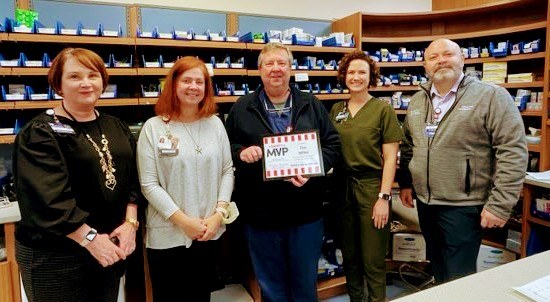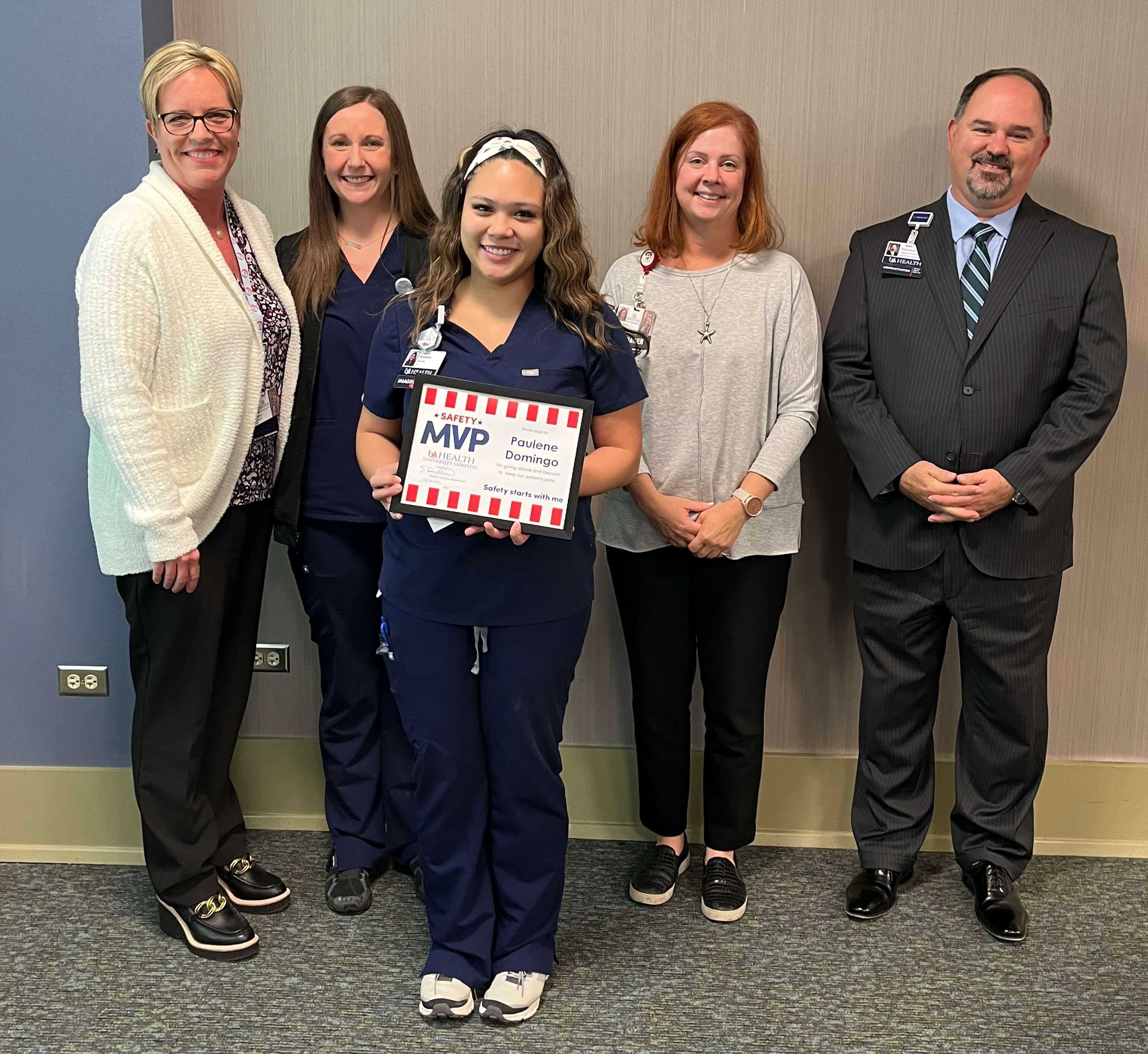
Safety MVP winners announced
Each quarter, Safety MVPs are chosen for recognition from all Great Catch award winners for each USA Health hospital.


Two USA Health employees have been named Safety MVPs for the quarter. Tim Miller, a pharmacist at Children’s & Women’s Hospital, and Paulene Domingo, a radiology technologist at University Hospital, were chosen for recognition from among the Great Catch Award winners during the quarter. They received the use of a parking space and other gifts.
Great Catch awards are given to employees for instances in which they spoke up for safety, escalated concerns, and went above and beyond outside of the scope of their typical job duties.
Miller won a Great Catch Award for a case involving a pediatric patient’s weight. The patient’s weight was documented at 37 kg. He was skeptical about the weight and called the unit to confirm. The unit staff member said the scales only measured in kilograms, so the weight must be correct. Miller asked for the patient to be reweighed, and it was discovered that the patient weighed 17.85 kg (39 pounds). The catch prevented multiple medication errors.
Domingo won a Great Catch Award for quickly recognizing abnormal images for two separate patients and immediately escalating the findings to physicians.
In one stroke code, Domingo noted that the patient had an aortic dissection immediately upon seeing the CT angiography (CTA) of the head and neck. As a result, the team was able to act swiftly and treat the patient quickly and appropriately. The aortic dissection was an incidental finding and not related to the reason the CTA was ordered.
In another stroke code, Domingo noted an area of concern on the patient’s CTA head and neck while she was processing the images. Two CTAs were required because of a bad first image. While the neurologist was outside the room talking to the patient about tissue plasminogen activator (tPA) treatment, Domingo came into the hallway to bring the physician into the room to point out the area of concern. The case became a suspected hemorrhage rather than ischemic stroke, and the course of treatment was changed.




